Are you considering making the switch to an electric vehicle? Congratulations! Not only will you contribute to a greener future, but you’ll also enjoy the numerous benefits of driving an electric car. However, preparing your garage for this exciting change is essential before you bring home your new EV.
Preparing your garage for an electric vehicle involves a few modifications to ensure a convenient and safe charging experience. Whether you’re an environmental enthusiast or simply looking to save on fuel costs, these modifications are crucial to maximizing your electric car ownership.
First and foremost, you’ll need to install an electric vehicle charger in your garage. This will serve as your fueling station, allowing you to recharge your car’s battery overnight or whenever convenient. A Level 2 charger is recommended, providing a faster and more efficient charging experience than a standard Level 1 charger.
Another essential modification to consider is your garage’s electrical system. Since charging an electric vehicle requires significant energy, it’s crucial to ensure that your garage’s electrical setup can handle the load. Consulting with a licensed electrician will help you determine whether you need to upgrade your electrical panel or make any other necessary changes to support your new EV’s charging needs.
Furthermore, it’s essential to consider the physical layout of your garage. Make sure there’s enough space near the charging station to maneuver your EV comfortably. Additionally, if you live in extreme weather conditions, you may want to insulate your garage to protect your electric car’s battery from temperature fluctuations.
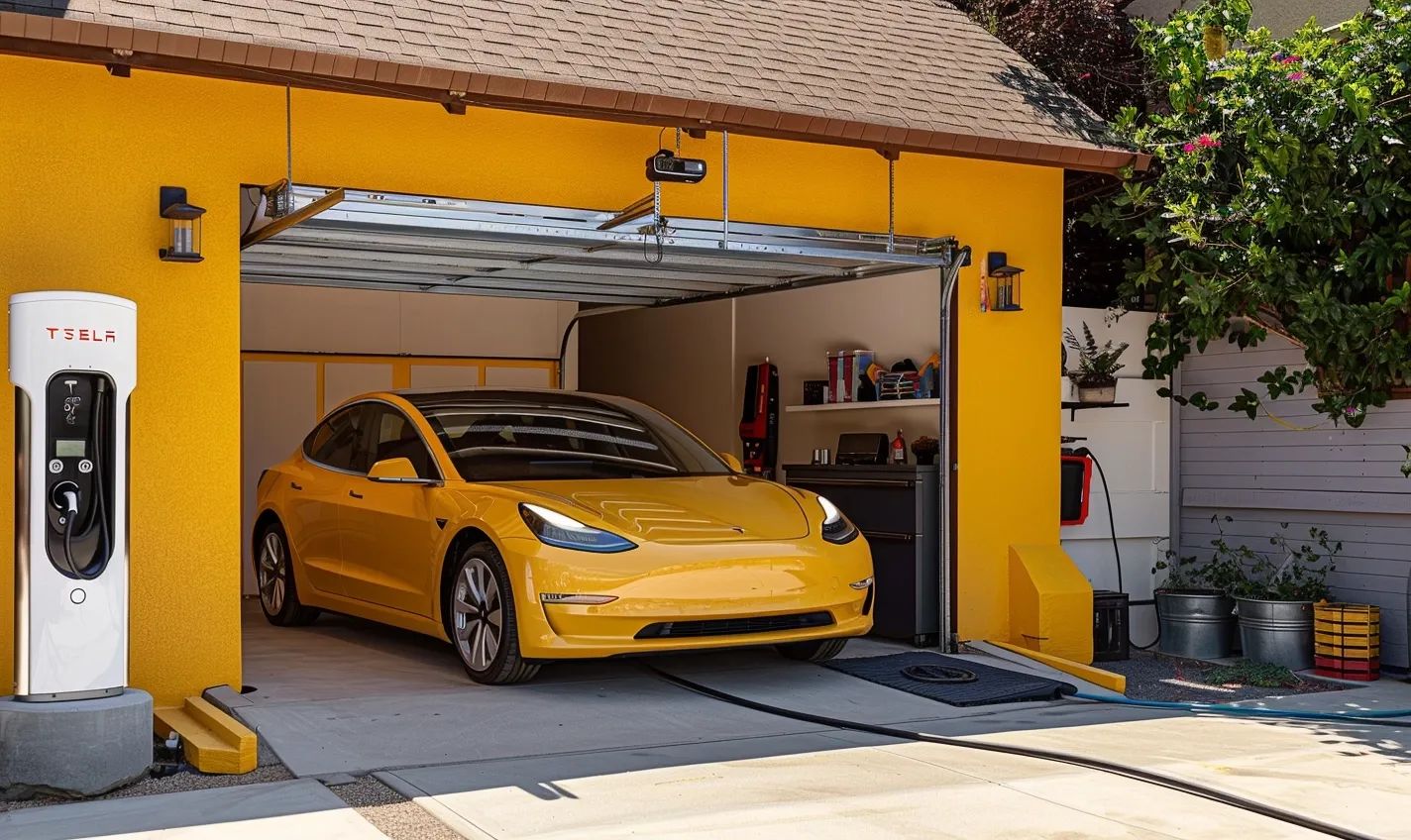
Why Electric Vehicles are Gaining Popularity
Electric vehicles (EVs) have been steadily gaining popularity in recent years, and it’s not hard to see why. As more people become aware of the environmental impact of traditional gas-powered cars, they are looking for cleaner and more sustainable alternatives. EVs offer a range of benefits that make them an attractive choice for many drivers.
Environmental Impact:
One of the main reasons why EVs are gaining popularity is their positive environmental impact. Unlike gasoline-powered vehicles, electric cars produce zero tailpipe emissions, reducing greenhouse gas emissions and air pollution. Driving an EV can significantly reduce carbon footprints and create a cleaner and healthier planet for future generations.
Cost Savings:
Electric vehicles offer long-term cost savings compared to traditional cars. EVs have lower maintenance and operating costs since they have fewer moving parts and don’t require regular oil changes. Additionally, the price of electricity is typically lower than gasoline, which means lower fuel costs for EV owners. Over time, these savings can add up, making electric vehicles a wise financial investment.
Government Incentives:
To encourage the adoption of electric vehicles, many governments around the world offer various incentives. These can include tax credits, rebates, and grants for purchasing an electric car or installing a home charging station. These financial incentives make switching to an EV more affordable and appealing to potential buyers.
Technological Advancements:
Technological advancements have made electric vehicles more efficient, reliable, and accessible. EVs offer longer driving ranges, shorter charging times, and improved battery life. As technology evolves, we can expect even more exciting developments in the electric vehicle market.
As the demand for EVs increases, preparing your garage for electric vehicle charging is essential. Making the necessary modifications will ensure efficient and convenient charging at home. From assessing your garage’s electrical system to upgrading to a level 2 charging station, there are several steps you can take to create an EV-friendly space. Stay tuned for our upcoming blog posts, where we will provide you with all the information you need to prepare your garage for an electric vehicle.
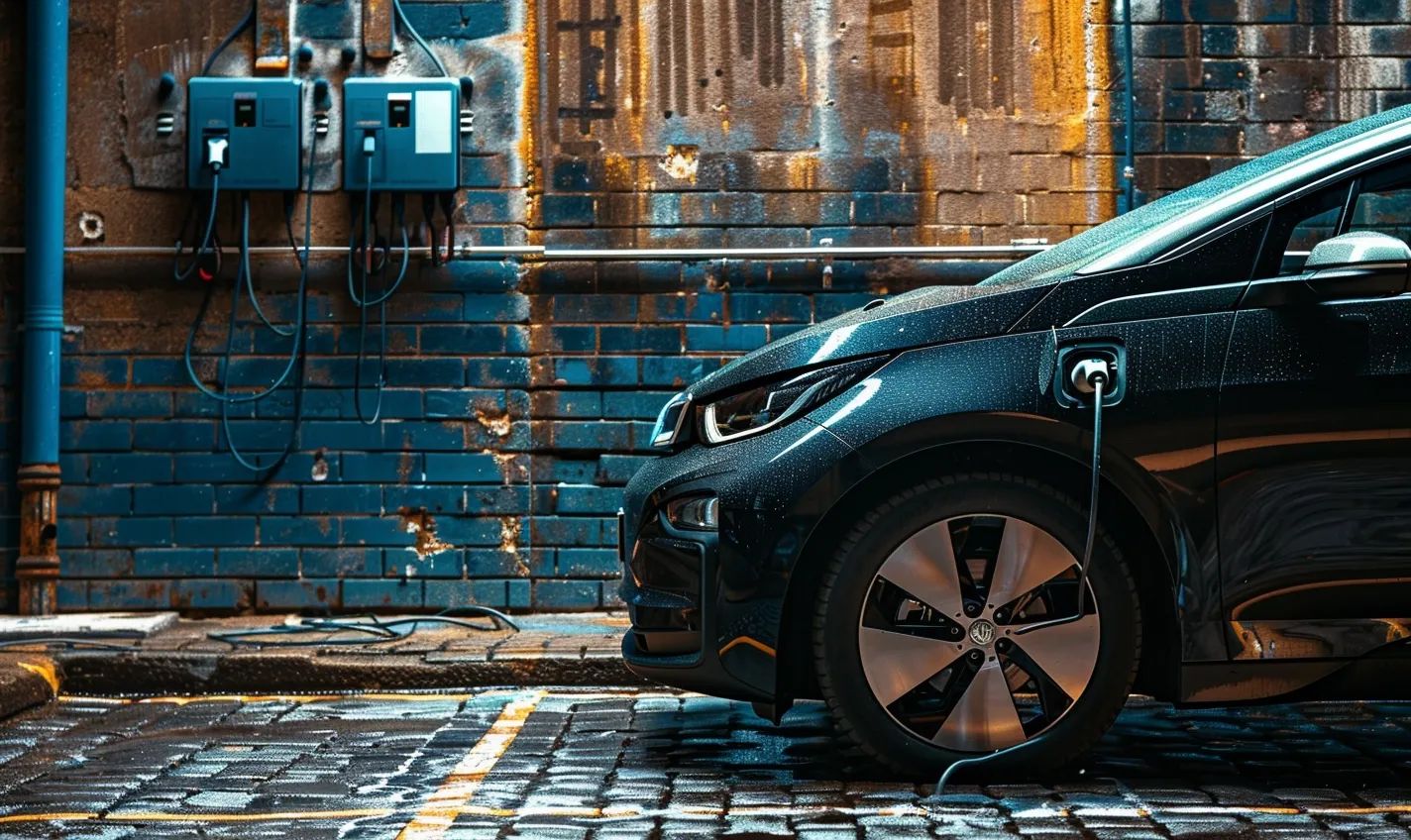
The Benefits of Charging at Home
Convenience and Time Savings
One of the primary benefits of charging your electric vehicle (EV) at home is its convenience. Instead of searching for public charging stations, you can plug in your EV when you return home. This saves you time and eliminates the hassle of waiting in line or driving out of your way to charge your vehicle.
Additionally, charging at home allows you to take advantage of downtime. Whether sleeping, working, or relaxing, your car can charge in the background without interrupting your daily routine.
Cost Savings
Charging at home can also lead to significant cost savings in the long run. Electricity prices are generally lower than gasoline prices, resulting in lower fuel costs for your EV. You can also take advantage of time-of-use rates, which offer lower electricity prices during off-peak hours.
By charging overnight or during off-peak hours, you can maximize these savings and reduce the overall cost of operating your vehicle. Over time, the savings can increase, making electric vehicles more cost-effective than conventional gasoline-powered cars.
Environmental Benefits
Another critical advantage of charging at home is the positive impact on the environment. Electric vehicles produce zero tailpipe emissions, helping to reduce air pollution and combat climate change. You can reduce your carbon footprint by charging your EV with renewable energy sources such as solar or wind power.
You have more control over your energy source when you charge at home. This enables you to align your transportation choices with your environmental values, making a meaningful contribution to a cleaner and greener future.
Peace of Mind
Charging your electric vehicle home provides peace of mind, knowing you have a reliable and accessible charging solution. With a dedicated charging station in your garage, you won’t have to worry about finding a place to charge, especially during busy times or in areas with limited charging infrastructure.
Charging at home also eliminates range anxiety, as you can always start each day with a fully charged battery. This provides security and confidence, knowing your vehicle will take you wherever you need.
In conclusion, charging your electric vehicle at home offers a range of benefits, including convenience, cost savings, environmental advantages, and peace of mind. Considering these advantages, the necessary garage modifications are worth considering to ensure a seamless and efficient charging experience.
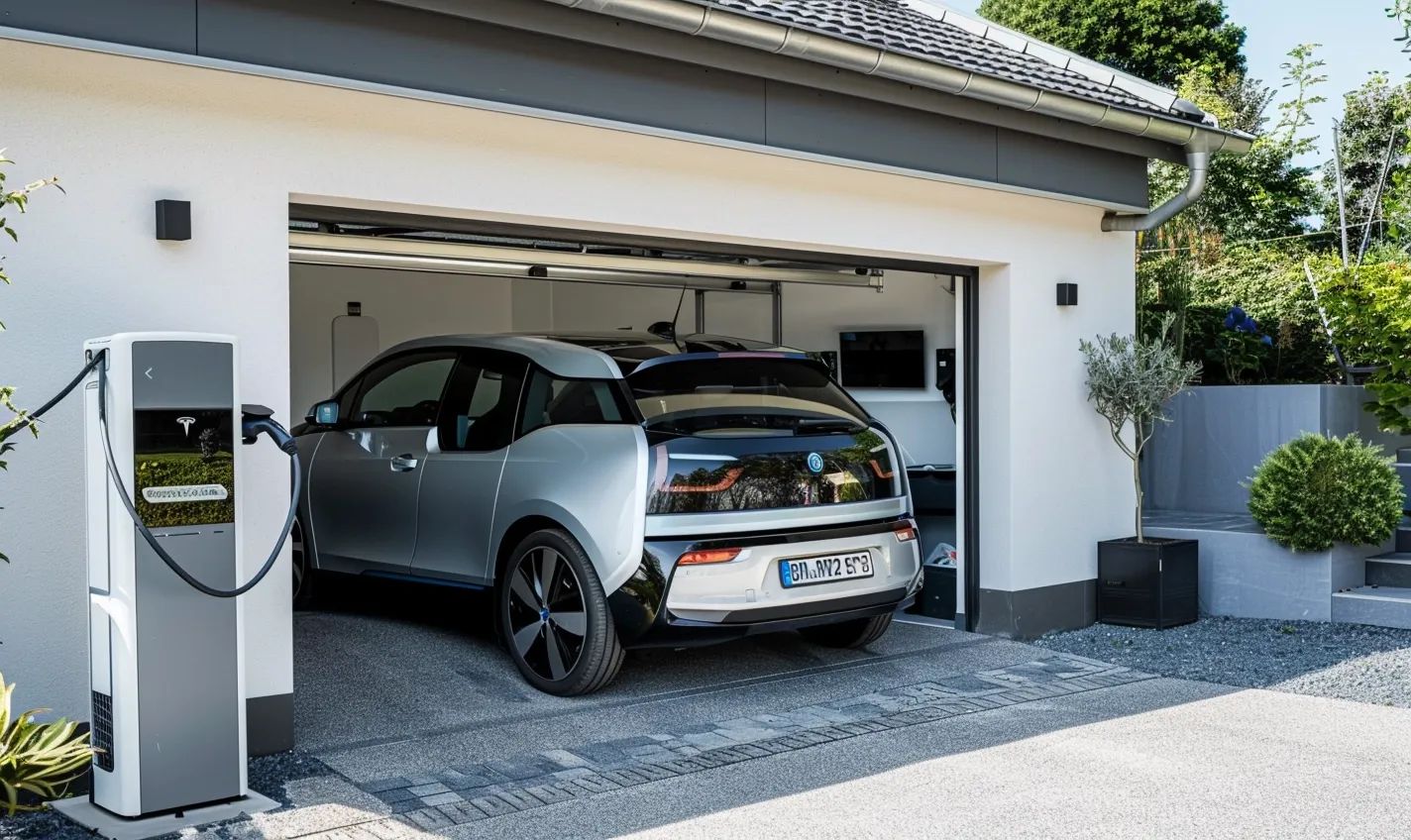
Assessing Your Garage’s Electrical System
So, you’ve decided to take the plunge and switch to an electric vehicle (EV). Congratulations on your eco-friendly choice! It’s time to prepare your garage to accommodate your new electric ride. One of the crucial steps in this process is assessing your garage’s electrical system. Ensuring that your garage has the appropriate electrical capacity and infrastructure is essential for efficient and safe charging. Here’s what you need to consider:
Evaluating the Ampacity
The first thing you need to do is assess your garage’s capacity. Ampacity refers to the maximum electrical current that a circuit can safely handle. To determine if your garage’s electrical system is capable of supporting an electric vehicle charger, you’ll need to evaluate the following:
- The amp rating of your existing electrical service
- The amp rating of your main breaker
- The size and capacity of your electrical panel
Consulting with an Electrician
If you’re unsure how to assess your garage’s electrical system, it’s best to consult a licensed electrician. They have the expertise to evaluate your electrical infrastructure and recommend any necessary upgrades or modifications. Hiring a qualified electrician is essential to ensure a safe and compliant installation.
Upgrading to a Level 2 Charging Station
While a standard 120-volt power outlet can charge your electric vehicle, it’s not the most efficient option. Upgrading to a Level 2 charging station is highly recommended, as it provides faster charging times. These stations require a 240-volt circuit, similar to an electric clothes dryer or oven. Before installing a Level 2 charger, ensure your garage’s electrical system can handle the increased power demand.
Installing Dedicated Circuits
Ideally, your electric vehicle charger should have a dedicated circuit to avoid overloading your garage’s electrical system. Installing a dedicated circuit ensures the charging station has its circuit separate from other electrical devices in your garage. This setup allows optimal performance and minimizes the risk of tripping circuit breakers or causing electrical issues.
Considering Ground Fault Circuit Interrupters
Ground Fault Circuit Interrupters (GFCIs) are crucial for electrical safety. These devices protect against electric shock by instantly shutting off the power supply when an imbalance is detected. It’s essential to have GFCIs installed in your garage, especially near water sources like sinks or charging stations.
By assessing your garage’s electrical system and making any necessary upgrades or modifications, you can ensure a seamless and safe charging experience for your electric vehicle. Remember, it’s always best to consult with professionals for electrical work to guarantee compliance with local codes and regulations. Enjoy the convenience, savings, and environmental benefits of owning an electric vehicle!
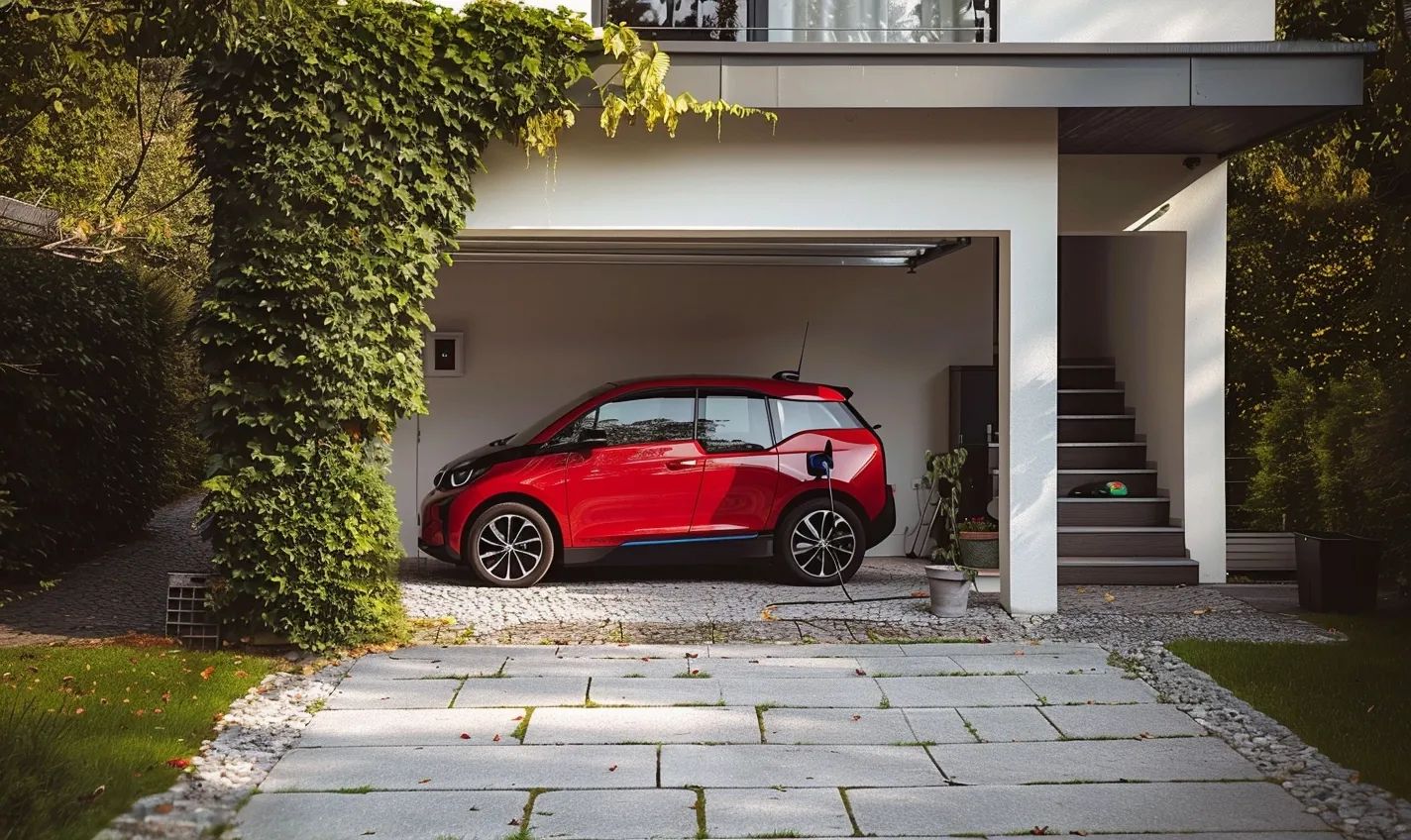
Upgrading to a Level 2 Charging Station
So, you’ve decided to switch to an electric vehicle (EV) and are excited about its environmental and cost-saving benefits. Charging your EV at home is convenient and economical, and to maximize this benefit, you should consider upgrading to a Level 2 charging station. Let’s explore why this upgrade is essential and how it can enhance your EV charging experience.
The Need for Speed
A Level 2 charging station operates at a higher voltage (240 volts) than a Level 1 charger (120 volts) typically provided with your EV. This increased voltage enables faster charging, reducing the time it takes to charge your vehicle thoroughly. While a Level 1 charger may take 8-12 hours to charge your EV fully, a Level 2 charging station can accomplish the same task in as little as 4 hours. It’s like upgrading from dial-up internet to lightning-fast broadband!
Convenience at Its Best
With a Level 2 charging station, you’ll enjoy the convenience of quickly topping up your EV’s battery while you sleep, work, or relax at home. This means no more stressful trips to the gas station or relying solely on public charging infrastructure. The plug-and-play feature of most Level 2 chargers makes it incredibly simple to connect your vehicle, allowing you to charge effortlessly whenever you need to.
Compatibility and Future-Proofing
Level 2 charging stations are compatible with all-electric vehicle models, making them a versatile choice regardless of the make or model of your EV. Moreover, as EV technology evolves, Level 2 chargers will remain relevant and compatible with future EV models. So, if you’re planning to upgrade your vehicle, investing in a Level 2 charging station will ensure you’re ready to charge your new EV without any hassle.
Outfitting Your Garage
Installing a Level 2 charging station in your garage requires a few modifications to your electrical system. It’s crucial to have a licensed electrician assess your garage’s wiring to determine if it can handle the increased power demand. Sometimes, you may need to upgrade your circuit breaker panel and distribution wiring to accommodate the additional load. Additionally, installing a dedicated circuit for your EV charger is recommended to ensure optimal charging performance.
Lastly, consider the positioning and mounting options for your Level 2 charging station. Select a location that provides easy access to your EV and adequate space for maneuvering. Wall-mounted charging stations are popular as they save floor space and give your garage a clean, organized look.
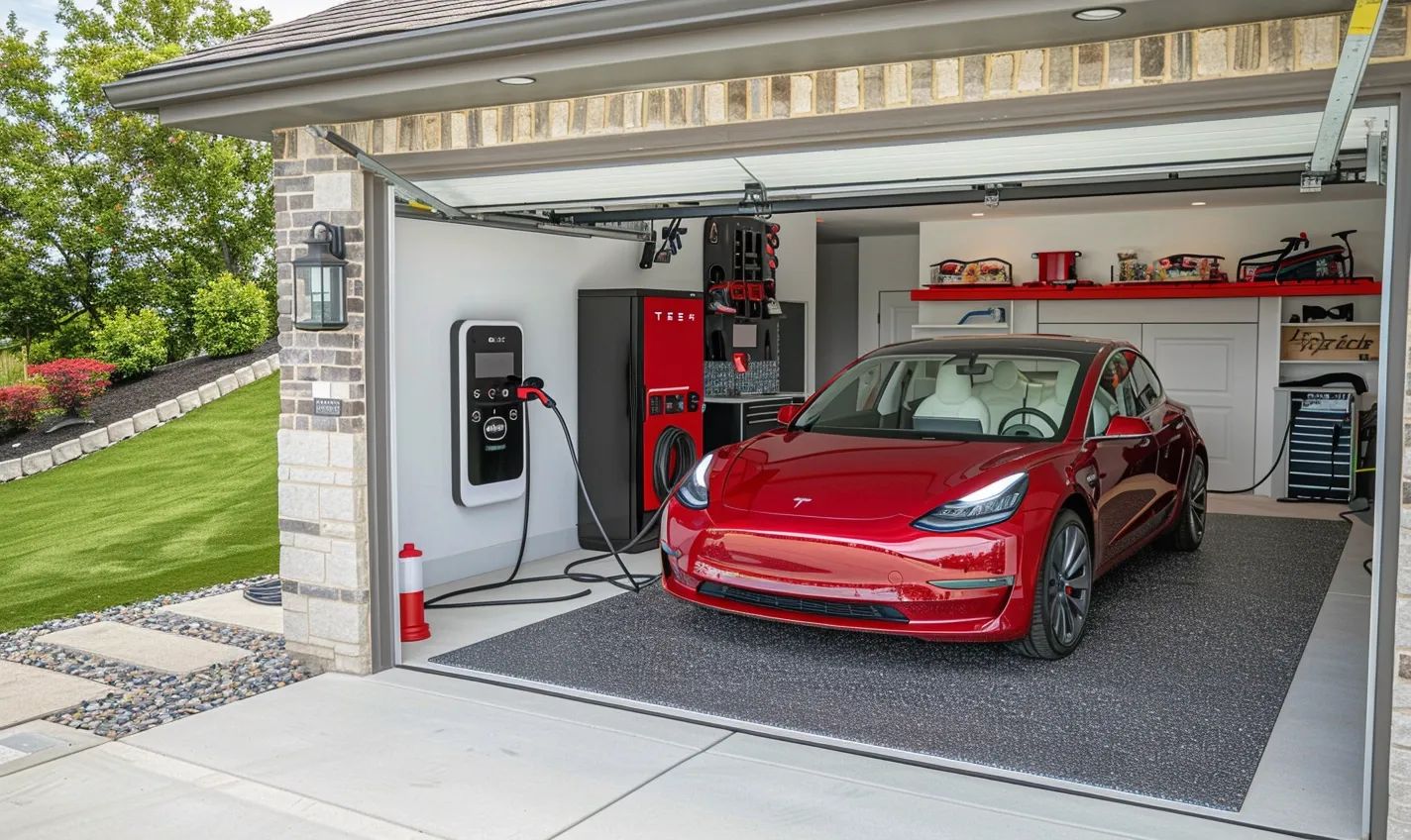
Ensuring Sufficient Amperage for Efficient Charging
When preparing your garage for an electric vehicle, one of the most crucial aspects is ensuring sufficient amperage for efficient charging. Electric cars typically require higher amperage levels than standard household appliances, so assessing your garage’s electrical system and making any necessary upgrades is essential.
Assessing Your Garage’s Electrical System
The first step in ensuring sufficient amperage is to evaluate your garage’s electrical system. Here are a few key points to consider:
- Check the amperage capacity of your existing electrical panel. Older homes may have panels with lower amperage, such as 60 or 100 amps, while newer homes typically have panels with higher amperage, such as 200 amps.
- Determine the current load on your panel. Calculate the total amperage required by all the devices and appliances connected to your electrical system.
- Identify any circuits that may be overloaded. Look for cases where multiple devices or appliances are connected to the same circuit and drawing too much power.
- Consider hiring a licensed electrician to perform an electrical load calculation. They can assess your electrical panel’s capacity and recommend any necessary upgrades.
Upgrading to a Level 2 Charging Station
Once you’ve assessed your garage’s electrical system, upgrading to a Level 2 charging station may be necessary. Unlike most electric vehicles’ standard Level 1 charging cord, a Level 2 charging station requires a higher amperage circuit and provides significantly faster charging times.
A Level 2 charging station typically requires a dedicated circuit, separate from the rest of your garage’s electrical load, to ensure sufficient amperage. This provides more power to your electric vehicle charger and optimizes charging efficiency.
Installing Dedicated Circuits for EV Charging
If your existing electrical panel does not have sufficient amperage capacity for a Level 2 charging station, installing dedicated circuits for EV charging may be necessary. These circuits are specifically designed to supply power solely to your electric vehicle charger, ensuring that it receives the required amperage without overloading the rest of your electrical system.
By installing dedicated circuits, you can avoid potential power fluctuations and ensure a reliable and efficient charging experience for your electric vehicle.
Remember to always consult with a licensed electrician when making modifications to your garage’s electrical system. They can help you navigate the process and ensure all electrical work is done safely and up to code.
Ensuring sufficient amperage for efficient charging is crucial in preparing your garage for an electric vehicle. By assessing your garage’s electrical system, upgrading to a Level 2 charging station, and installing dedicated circuits, you can optimize your charging experience and enjoy the convenience of electric vehicle ownership.
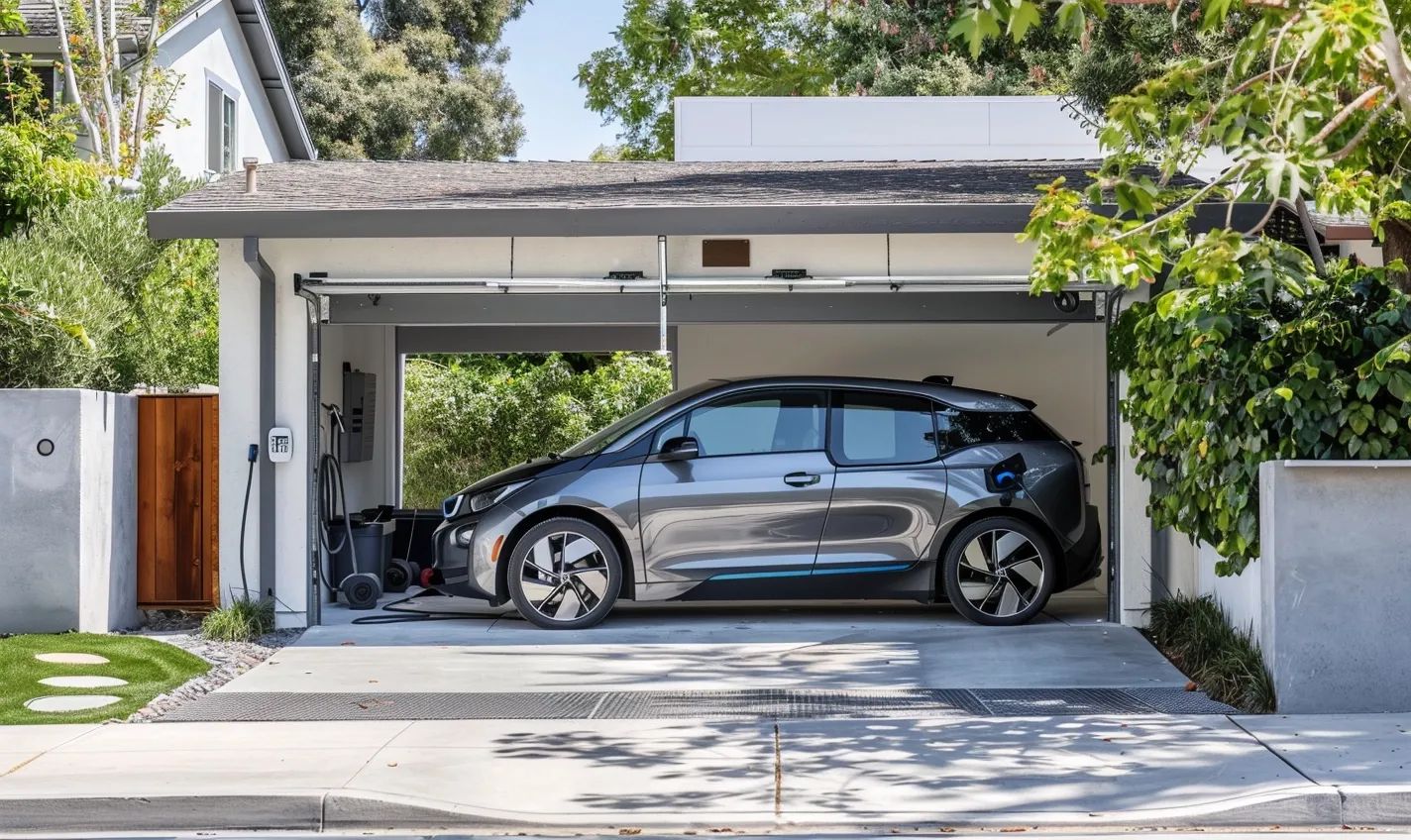
Installing Dedicated Circuits for EV Charging
Why Installing Dedicated Circuits is Essential
If you have made the greener choice and invested in an electric vehicle (EV), it is crucial to ensure that your garage is adequately equipped to handle the charging needs of your new car. One of the most essential steps in preparing your garage for an electric vehicle is installing dedicated circuits for EV charging.
What are Dedicated Circuits?
Dedicated circuits are electrical circuits that are specifically designated for a single purpose. In the case of EV charging, a dedicated circuit ensures that your vehicle receives the necessary power without overloading your garage’s electrical system. By installing dedicated circuits, you can avoid potential safety hazards and ensure efficient charging for your electric vehicle.
The Benefits of Dedicated Circuits
1. Safe and Efficient Charging: EVs charging on dedicated circuits are less likely to trip circuit breakers or cause other electrical issues. This allows for safe and uninterrupted charging, ensuring your vehicle is always ready to hit the road.
2. Faster Charging Speeds: Dedicated circuits provide a higher amperage capacity than typical household outlets. This means you can enjoy faster charging times, getting your electric vehicle fully charged in a shorter period.
3. Preventing Overloads: A dedicated circuit solely for EV charging eliminates the risk of overloading your electrical system. This is especially crucial if you live in an older home with outdated wiring, as it reduces the chances of electrical hazards, such as fires or damage to the wiring itself.
Installation Process
Installing dedicated circuits for EV charging is not a DIY project. Hiring a qualified electrician specializing in EV charging installations is recommended. Here are the typical steps involved in the installation process:
1. Evaluation: The electrician will assess your garage’s electrical system and determine the optimal location for the dedicated circuits.
2. Electrical Panel Upgrade: If your electrical panel is not equipped to handle the additional load, the electrician may recommend upgrading it to accommodate the dedicated circuits.
3. Wiring and Installation: The electrician will install new wiring, outlets, and wall-mounted charging stations, ensuring the dedicated circuits are correctly connected to provide efficient and safe charging.
4. Proper Grounding: Grounding is a critical safety measure against electrical faults. The electrician will ensure that the dedicated circuits are properly grounded to minimize the risk of electrical shocks.
Remember, the cost of installing dedicated circuits will vary based on factors such as your garage’s current electrical system, the number of circuits needed, and the complexity of the installation. Multiple quotes from qualified electricians are always recommended to ensure a fair price.
In conclusion, installing dedicated circuits for EV charging is crucial in preparing your garage for an electric vehicle. Dedicated circuits provide peace of mind by ensuring safe and efficient charging and help you make the most of your electric vehicle ownership experience.
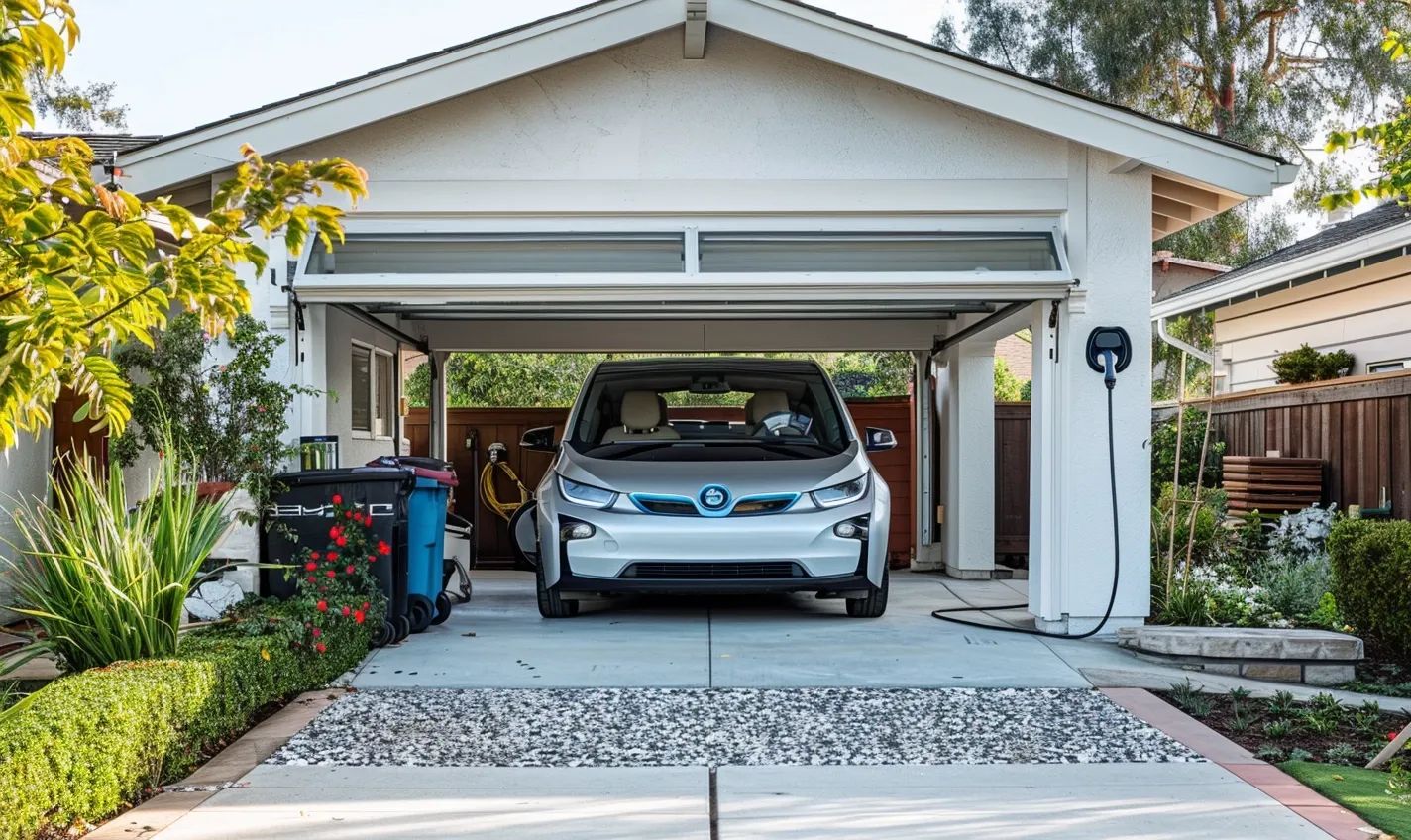
Understanding the Importance of Ground Fault Circuit Interrupters
When preparing your garage for an electric vehicle, one crucial aspect often overlooked is installing ground fault circuit interrupters (GFCIs). These devices not only play a significant role in ensuring the safety of your charging station but also protect you and your property from electrical accidents.
What are Ground Fault Circuit Interrupters?
GFCIs are electrical safety devices designed to prevent electric shock and electrocution. They work by constantly monitoring the flow of electricity in a circuit. If there is an imbalance between the hot and neutral conductors, it indicates that some current is leaking and potentially flowing through a person. In such cases, the GFCI immediately shuts off the power, minimizing the risk of injury or fire.
The Importance of Electric Vehicle Charging
Installing GFCIs is of utmost importance when it comes to electric vehicle charging. Here’s why:
- Lifesaving Protection: Electric vehicles rely on high-voltage charging systems, which can pose a greater risk of electrical accidents. GFCIs provide an extra layer of protection, reducing the chance of electric shock in case of faults or malfunctions.
- Compliance with Building Codes: Many jurisdictions require GFCI protection for outlets used for EV charging. Installing GFCIs ensures that your garage meets the necessary building codes and regulations.
- Reduced Fire Hazard: GFCIs can detect even minor fluctuations in electrical currents, aiding in identifying potential fire hazards caused by faulty wiring or damaged charging equipment.
- Overall Electrical Safety: By incorporating GFCIs into your electric vehicle charging setup, you prioritize your family’s well-being and your property’s long-term safety.
So, whether you are planning to upgrade your garage for electric vehicle charging or already have a charging station set up, it is highly recommended to have GFCIs installed. Not only will this provide peace of mind knowing that you and your loved ones are protected, but it will also ensure that your charging infrastructure is up to code.
Remember: GFCIs are not substituting adequately installed and grounded electrical systems. It is always best to consult a certified electrician to assess and upgrade your garage’s electrical system to meet the unique requirements of electric vehicle charging.
By prioritizing safety with the inclusion of GFCIs, you can confidently take advantage of the numerous benefits that electric vehicles offer while providing a secure charging environment for your valuable investment.
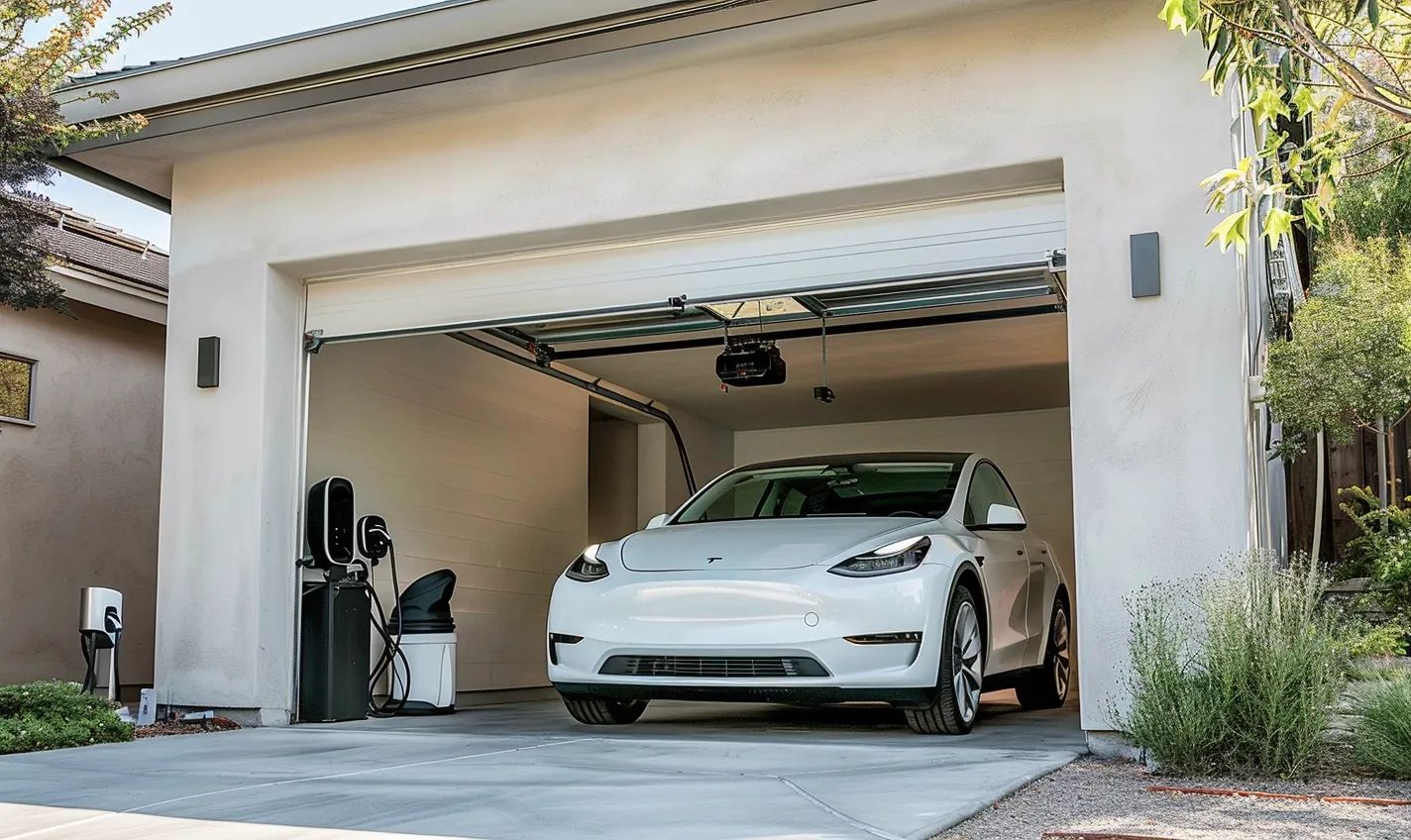
Choosing the Right Charging Cable Length
When preparing your garage for an electric vehicle, one crucial aspect to consider is choosing the right charging cable length. While it may initially seem simple, selecting the appropriate cable length can significantly impact your charging experience and convenience. Here are a few factors to consider when making this critical decision:
Distance from the Charging Station to Your Vehicle:
The first consideration is determining the distance between your charging station and your garage’s electric vehicle (EV) parking spot. Measure the distance accurately to ensure the cable length is sufficient to reach and connect to your car without straining or stretching. Shorter distances may require shorter cables, while longer distances may require longer cables.
Flexibility and Maneuverability:
Choosing a cable that offers flexibility and maneuverability is essential. Opt for a long cable to reach your vehicle even if it is not parked directly in front of the charging station. This will allow you to quickly move and park your EV without worrying about the cable becoming taut or tangled during the charging process.
Future-proofing:
Consider your future needs as well. If you plan to upgrade to a larger electric vehicle in the future, it is wise to choose a longer cable to accommodate potential changes in the size or layout of your garage.
Convenience:
Think about the convenience factor. A longer cable may provide more freedom and flexibility when charging your vehicle. It can also be helpful if you need to park another car alongside your electric vehicle and maintain access to the charging station.
Safety:
Ensure that the charging cable you choose is not excessively long, as this can pose tripping hazards or increase the risk of damage to both the cable and connector. Strive to balance convenience and safety by selecting a cable length that meets your requirements without creating unnecessary risks.
You can choose the right charging cable length for your garage by carefully considering these factors. Investing time into this decision will allow you to enjoy the ease and convenience of charging your electric vehicle at home without any unnecessary limitations or inconveniences.
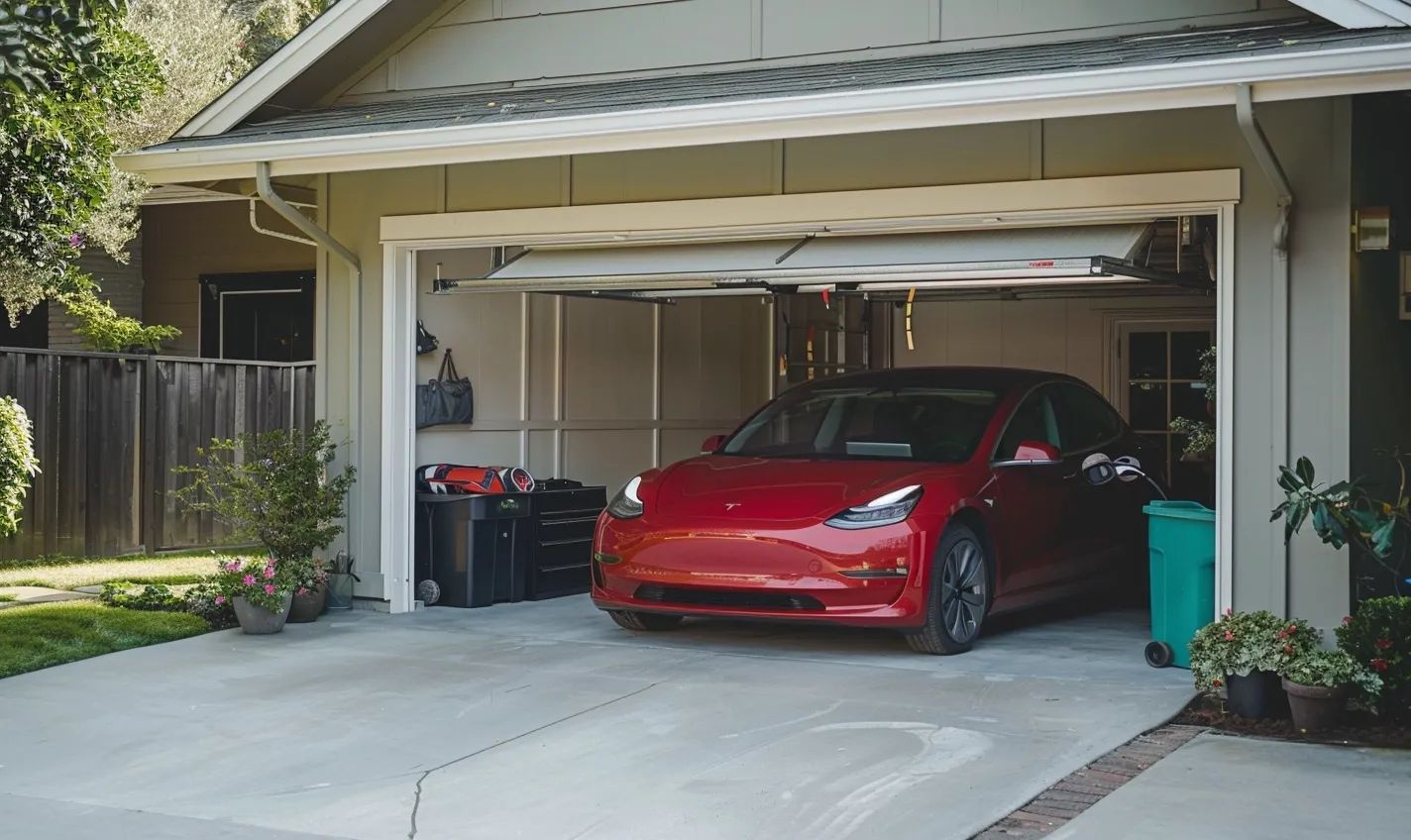
Considering Wall-Mounted Charging Stations
You’ve decided to switch to an electric vehicle, and now it’s time to prepare your garage for this exciting change. One important consideration is the installation of a wall-mounted charging station. Let’s explore why this option is worth considering:
Convenience and Space
Wall-mounted charging stations offer a convenient and space-saving solution for charging your electric vehicle at home. By mounting the charging station on the wall, you can free up valuable floor space in your garage, making it easier to maneuver your vehicle and store your belongings.
Faster Charging Speeds
Unlike a standard Level 1 charger, wall-mounted charging stations provide faster charging speeds. With a Level 2 charging station, you can enjoy up to four times faster charging, allowing you to get back on the road faster. Who doesn’t want that?
Customization and Flexibility
Wall-mounted charging stations come in various designs, allowing you to choose one that matches your garage aesthetics. Additionally, these stations can be easily installed in a location that suits your needs, whether near your garage entrance or in a specific area for EV charging.
Smart Features
Many wall-mounted charging stations come equipped with intelligent features that offer enhanced functionality. From smartphone apps to monitoring and managing your charging sessions to advanced scheduling and energy usage tracking, these features provide a seamless and intelligent charging experience.
Cost-Effectiveness
While the upfront cost of a wall-mounted charging station may be higher than a standard Level 1 charger, it can save you money in the long run. With faster charging times, you can use off-peak electricity rates or time-of-use billing, reducing overall charging costs.
Integration with Solar Panels
If solar panels are installed on your property, a wall-mounted charging station can easily integrate with your solar power system. This means you can charge your electric vehicle using clean, renewable energy, reducing your carbon footprint.
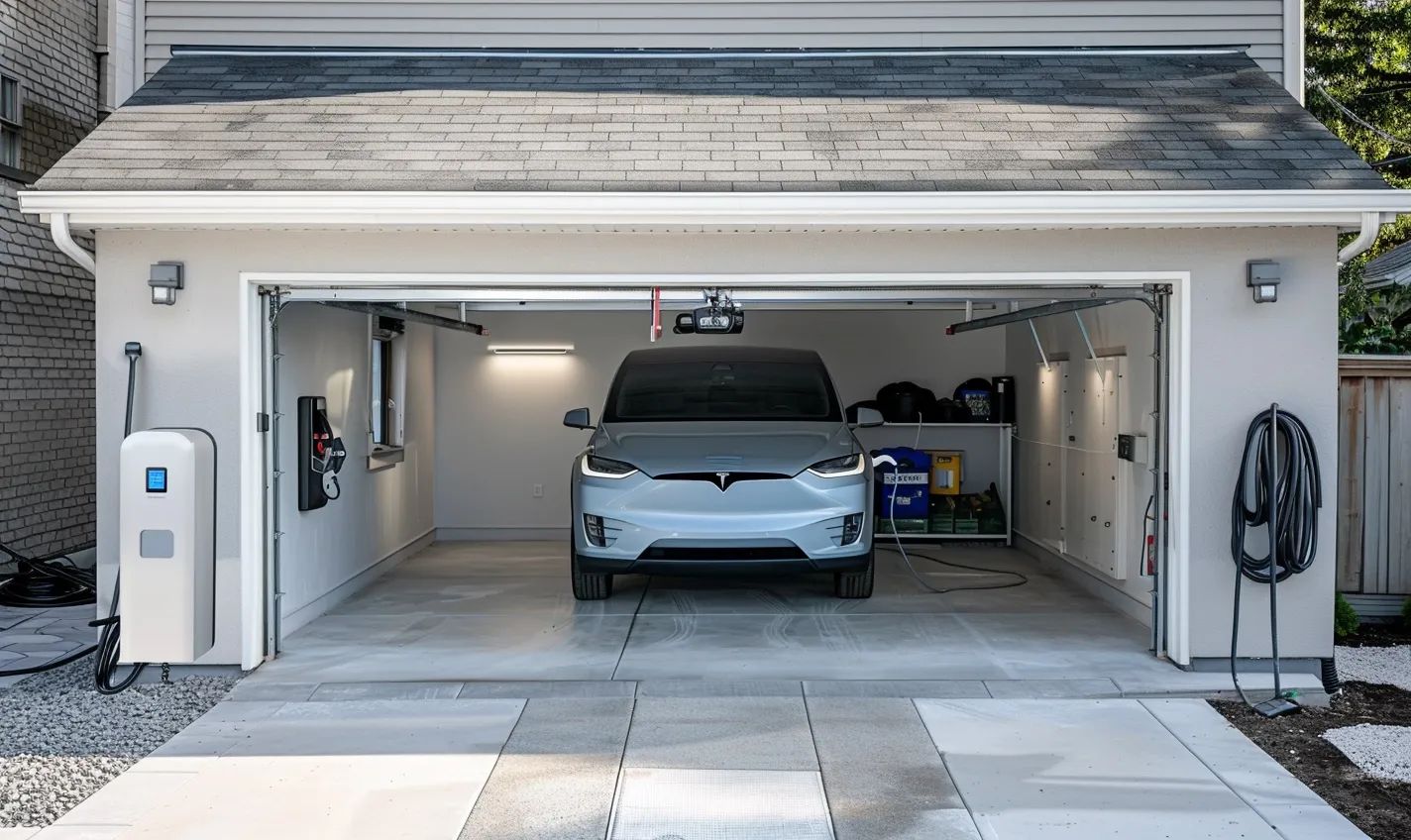
Organizing Your Garage for EV Charging
So, you’ve decided to switch to an electric vehicle (EV), and now you’re ready to prepare your garage for the charging process. Organizing your garage to accommodate your new EV charging needs is essential for convenience, safety, and efficiency. Here are some tips to help you get started:
Clear the Clutter
Before you begin setting up your EV charging station, it’s crucial to declutter your garage. Remove any unnecessary items or obstructions that might hinder the charging process. This creates a clean and organized space and reduces the risk of accidents and damage to your EV.
Determine the Ideal Charging Spot
Identify the spot where you plan to install the EV charging station in your garage. Consider factors such as proximity to a power source, accessibility, and adequate space for maneuvering your vehicle during the charging process.
Install Wall-Mounted Charging Stations
Consider installing a wall-mounted charging station for your EV, as it helps optimize space utilization and keeps the charging cable neatly organized. These charging stations are compact and easily mounted on the wall, allowing you to charge your EV efficiently without cluttering the floor space.
Optimize Lighting for Safety and Convenience
Proper lighting in your garage is crucial for both safety and convenience. Ensure your charging area is well-lit, making connecting and disconnecting the charging cable easier. LED lights are an excellent choice for their energy efficiency and long lifespan.
Utilize Cable Management Solutions
Invest in cable management solutions to prevent tripping hazards and organize your garage. These solutions help keep the charging cable neatly stored when not in use, preventing tangles and extending the cable’s lifespan.
In addition to these organization tips, don’t forget to maintain a clean and well-ventilated garage space. Regular cleaning and proper ventilation help preserve the longevity of your EV and its charging station.
Remember, organizing your garage for EV charging is about convenience and ensuring the safety and longevity of your vehicle and charging equipment. These tips can create a dedicated charging space that enhances your overall EV ownership experience. So, go ahead, prepare your garage, and embark on your electric vehicle journey with confidence!
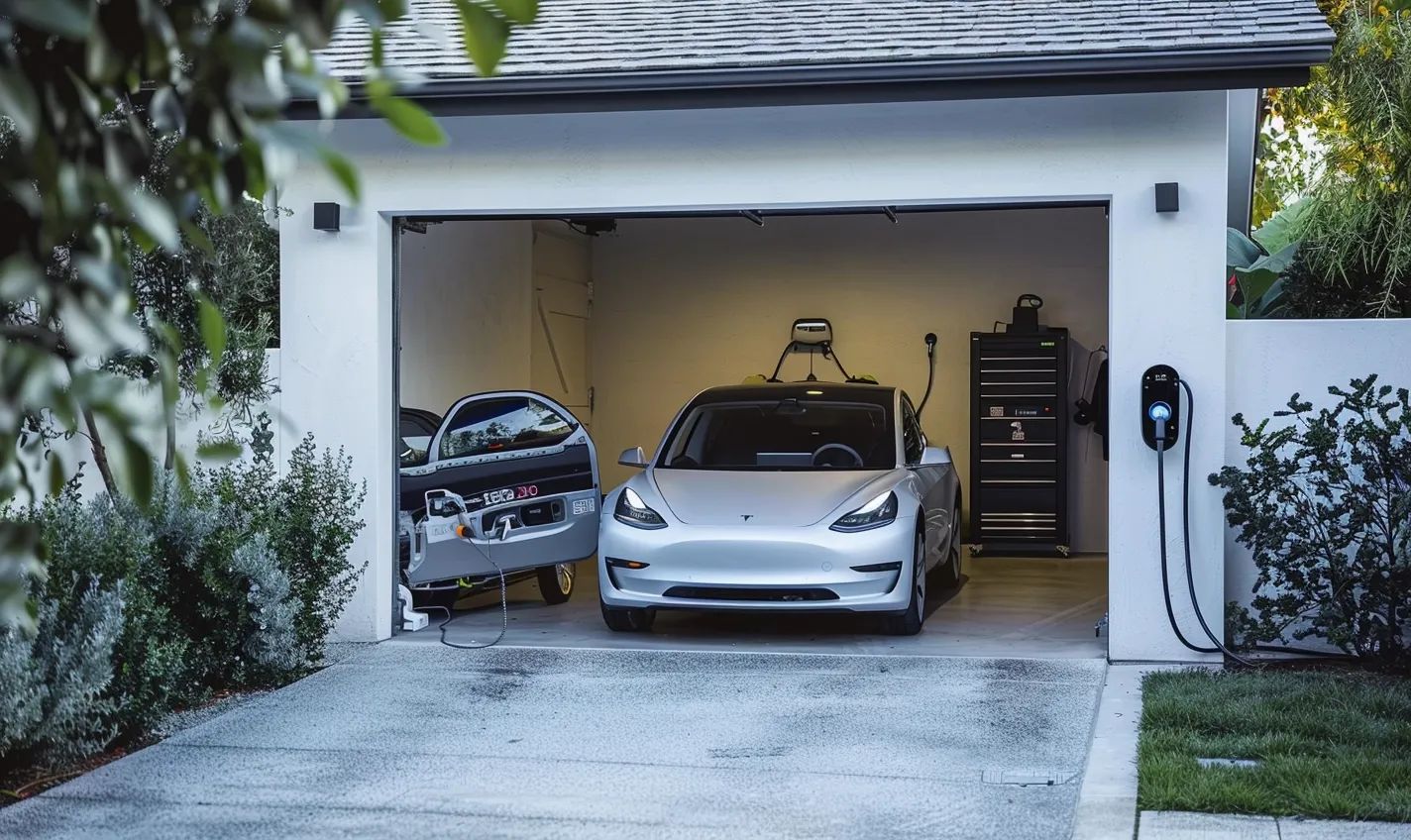
Optimizing Lighting for Safety and Convenience
When it comes to preparing your garage for an electric vehicle, one crucial aspect that is often overlooked is lighting. Optimal lighting not only enhances safety but also provides convenience during charging. Good visibility is essential whether you’re working on your car or plugging it in. Here are a few tips to help you optimize your garage lighting:
Upgrade to LED Lighting
Replacing traditional incandescent or fluorescent lights with LED bulbs is an excellent way to enhance lighting in your garage. LED lights are energy-efficient, provide better visibility, and last significantly longer than other bulbs. With their bright illumination and low maintenance requirements, LED lights are a wise investment for your EV garage.
Install Task Lighting
Consider adding task lighting in specific areas of your garage where you will likely spend more time. This could include workbenches, charging stations, or storage areas. Task lighting, such as adjustable LED desk lamps or track lighting, allows you to focus the light exactly where you need it most, ensuring optimal visibility for any task.
Utilize Motion-Activated Sensors
Installing motion-activated sensors is an effective way to optimize your garage lighting while reducing energy consumption. These sensors detect movement and automatically turn the lights on and off as needed. This feature ensures that your garage is well-lit when you enter, but it also saves electricity when no one is present, resulting in cost savings over time.
Consider Natural Lighting
If your garage has windows or skylights, use natural light sources to reduce your reliance on artificial lighting during the day. Natural light not only brightens up the space but also provides a refreshing and inviting atmosphere. Consider using window treatments that allow for adjustable levels of natural light, giving you control over privacy and brightness.
Use Reflective Surfaces
To maximize the effectiveness of your garage lighting, incorporate reflective surfaces into the space. Adding mirrors or reflective film to walls or doors can help distribute light evenly, making the area brighter and more spacious. Reflective surfaces can enhance visibility while working on your EV, ensuring you don’t miss any details.
By optimizing your garage lighting, you can create a safe and convenient environment for charging and maintaining your electric vehicle. Remember to consider LED lights, task lighting, motion-activated sensors, natural lighting, and reflective surfaces when updating the lighting in your garage. These enhancements will improve visibility and enhance the overall ambiance of your EV garage.
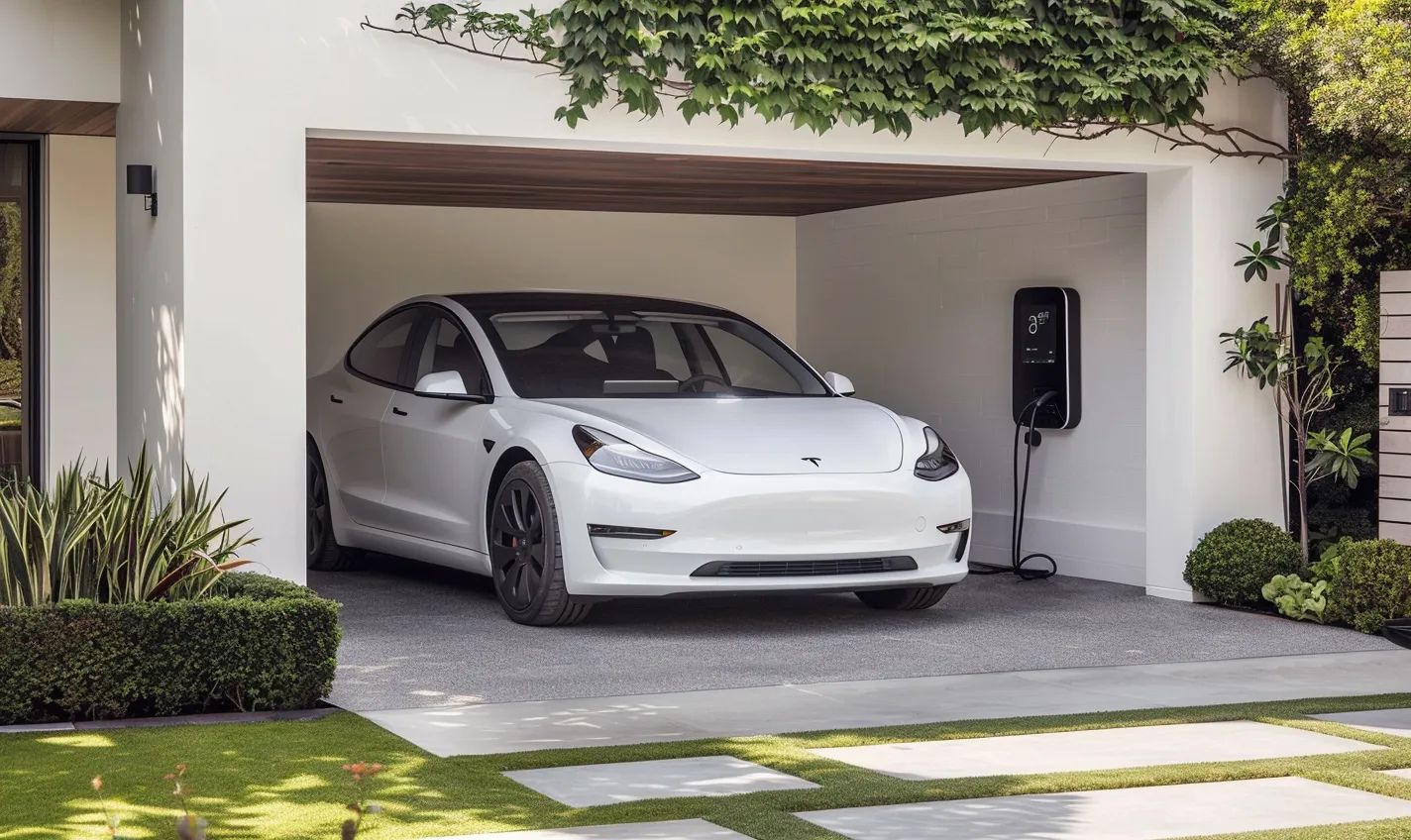
Maintaining a Clean and Well-ventilated Garage Space
Preparing your garage for an electric vehicle is not just about the electrical upgrades and charging infrastructure. One often overlooked aspect is maintaining a clean and well-ventilated garage space. Here’s why it’s important and how you can achieve it.
The Importance of a Clean Garage
A clean garage creates a pleasant environment for you and helps maximize the efficiency and longevity of your electric vehicle and its components. Here are a few reasons why a clean garage is essential:
- Preventing dust and debris: Dust and debris can find their way into your electric vehicle, clogging air filters and affecting the performance of your car’s battery and electrical systems.
- Protecting electrical connections: Keeping your garage clean helps prevent dirt and grime from accumulating on charging connectors, which can lead to poor electrical connections, slower charging speeds, and potential damage to the charging equipment.
- Reducing fire hazards: Clutter, flammable materials, or excess dust can increase the risk of fire in your garage. Clearing the space minimizes this risk and ensures the safety of your electric vehicle.
Creating Proper Ventilation
A well-ventilated garage is crucial for maintaining the health of both you and your electric vehicle. Adequate ventilation helps dissipate potentially harmful gases, such as those emitted during charging, and prevents the buildup of odors. Here’s what you can do to improve ventilation:
- Install exhaust fans: Exhaust fans extract stale air and fumes from your garage. They can help reduce odors and circulate air, promoting a healthier environment for you and your vehicle.
- Consider natural ventilation: Open windows or doors to allow for natural airflow. This can help in expelling any trapped gases and improving air quality.
- Use air purifiers: Air purifiers with HEPA filters can help remove dust, debris, and odors from your garage, providing cleaner air for you and your electric vehicle.
Following these steps, you can create a clean and well-ventilated garage space for your electric vehicle. Remember that maintaining a clean environment goes hand in hand with enjoying the benefits of owning and charging an electric car. So, take the time to keep your garage tidy and ensure proper ventilation for a pleasant and efficient charging experience.
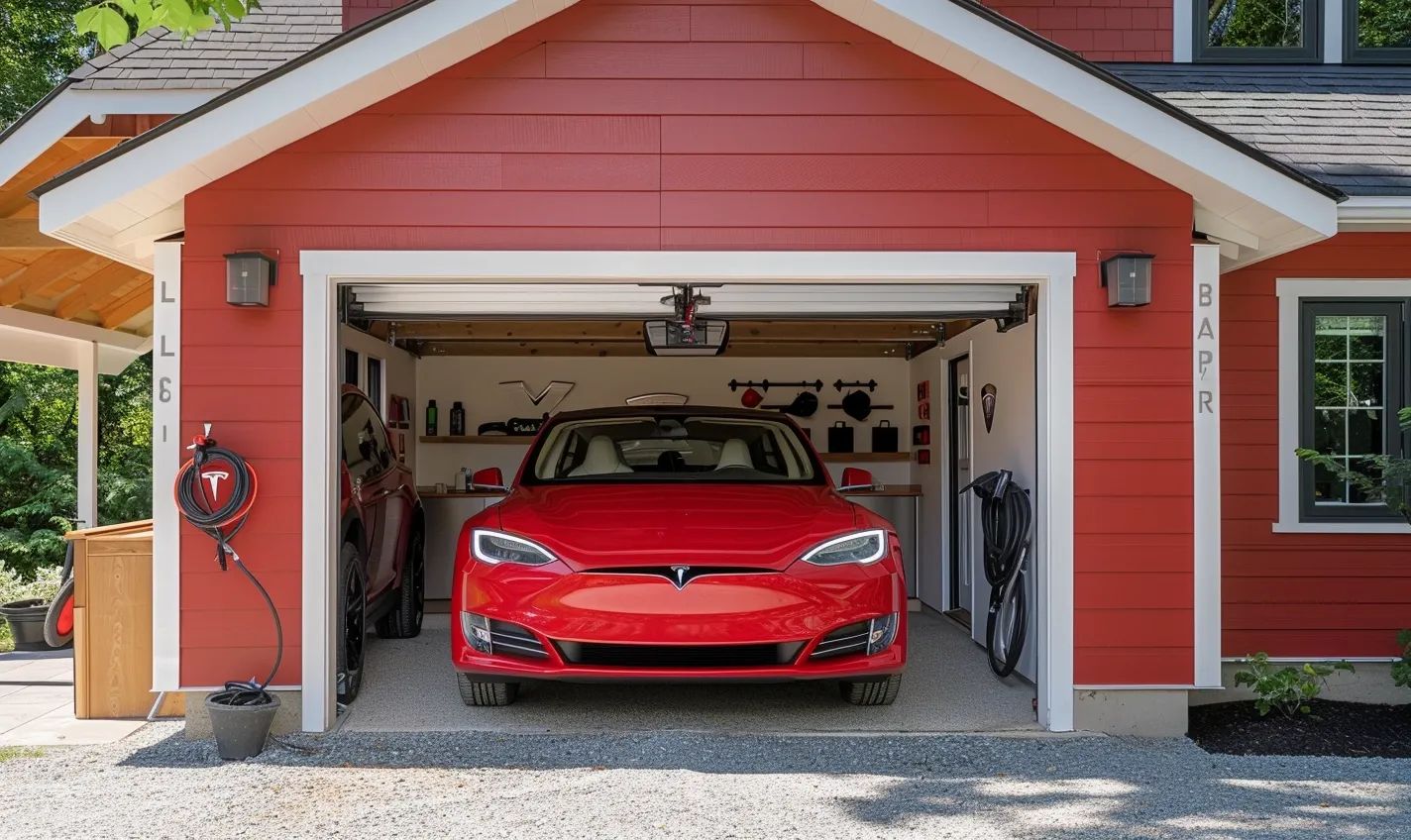
Conclusion
In conclusion, preparing your garage for an electric vehicle is essential to ensure a smooth and convenient experience. By making a few modifications, you can create a safe and efficient charging environment that meets the needs of your electric car.
First and foremost, installing a Level 2 home charging station is crucial. This enables faster charging times and allows you to take advantage of time-of-use rates, saving you money in the long run. Don’t forget to hire a qualified electrician to handle the installation process and ensure it meets all safety standards.
Next, consider organizing your garage space to accommodate your electric vehicle. Clear up clutter and create designated parking and charging areas. This will make connecting your car to the charging station easier and avoid potential trip hazards.
Furthermore, investing in proper insulation and ventilation is essential. Electric vehicle batteries perform optimally in temperature-controlled environments. By insulating your garage and providing adequate ventilation, you can help maintain an ideal temperature range, prolonging the lifespan of your vehicle’s battery.
Lastly, familiarize yourself with any local regulations or incentives related to electric vehicles. Some areas offer tax credits or rebates for installing charging stations, which can offset some of the initial costs.
By following these essential modifications, you can transform your garage into an electric vehicle-friendly space that meets your charging needs while optimizing the lifespan and performance of your electric car. Being prepared will make your driving experience more convenient and contribute to a more sustainable future.
Frequently Asked Questions (FAQs)
1. Why should I prepare my garage for an electric vehicle?
Preparing your garage for an electric vehicle is essential because it ensures a safe and convenient space to charge your car. By making some modifications, such as installing a charging station and ensuring proper electrical capacity, you can optimize your charging experience and protect your vehicle.
2. How do I know if my garage has enough electrical capacity for an electric car?
Consult a licensed electrician to determine if your garage has enough electrical capacity. They can assess your current electrical system and make any necessary upgrades to support the charging requirements of an electric vehicle.
3. What type of charging station should I install in my garage?
The type of charging station you should install depends on your specific needs and budget. Level 2 charging stations are the most common, providing faster charging times than standard electrical outlets. However, if you frequently take long trips, you might consider installing a Level 3 DC fast charger for rapid charging.
4. Do I need to change the lighting in my garage for electric vehicle charging?
While not mandatory, it is recommended to have adequate lighting around your charging station for safety and visibility purposes. Consider installing extra lighting fixtures or adjusting the existing lighting setup to ensure a well-lit, safe charging area.
5. How can I protect my electric vehicle from extreme temperatures in the garage?
Extreme temperatures can affect the performance and battery life of an electric vehicle. To protect your car, you can insulate your garage walls and ceiling, install weatherstripping on the garage door, and consider adding a garage ventilation system to help regulate temperature and improve airflow.
6. Are there any safety considerations when charging an electric vehicle in the garage?
Yes, safety is paramount when charging an electric vehicle in the garage. It is crucial to follow the manufacturer’s guidelines for charging and ensure that the electrical components, such as outlets and charging cables, are in good condition. Consider installing a smoke detector and fire extinguisher in the garage as an additional safety measure.